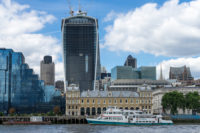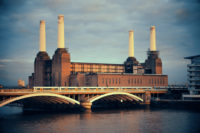- Selling
- Buying
- Landlords
- B&R Landlord hub
- Management services
- Vacant management
- Landlord reviews
- Rental investment
- Furnishing and refurbishment
- Yield calculator
- Free online valuation
- Stamp duty calculator
- ROI calculator
- Landlord resources
- EPC guide
- Video hub
- Area guides
- Fees for landlord
- Lettings Laws
- Why choose Benham and Reeves
- Renting
- New homes
- House prices
- International services
International offices
China, Hong Kong SAR, India, Indonesia, Malaysia, Middle East, Pakistan, Qatar, Singapore, South Africa, Thailand and Turkey
Learn more - Contact
- News
- Contact
- About us
- My B&R
The top reasons why London continues to attract property investment
- Landlords news
- 12.10.17
- Benham and Reeves
|
Getting your Trinity Audio player ready...
|
The Mayor of London Mayor, Sadiq Khan, has consistently promoted London as a cultural and business hub. He wants to make it “the world’s most film-friendly city” by investing in the film industry; he said London Tech Week 2017 was “a fantastic opportunity to show that London is open to collaboration, innovation and ideas that could change the way that all Londoners live and experience the city”; and he’s announcing trade relationships with Chicago and India amongst others. He’s been busy singing the praises of London on the world stage and with good reason. It’s been attracting huge property investment from all over the globe and here’s why.
Global Investment
 As we mentioned in our recent blog on “Best property investment options for landlords”, commercial consultancy group Cushman & Wakefield recently noted that property investment in the UK stood at £27.2bn in the first half of 2017 and that almost half the deals in the first six months were with commercial property investors from the Asia Pacific area. In March, the ‘Cheesegrater’ building at 122 Leadenhall Street was bought for £1.135bn by Chongqing-based CC Land Holdings; in June, Cheung Kei Group completed a £410m purchase of 20 Canada Square in Canary Wharf; and, in the biggest commercial property deal in the UK to date, the ‘Walkie Talkie’ building at 20 Fenchurch Street was bought for £1.3bn by Lee Kum Kee Group, a Hong-Kong based condiments company.
As we mentioned in our recent blog on “Best property investment options for landlords”, commercial consultancy group Cushman & Wakefield recently noted that property investment in the UK stood at £27.2bn in the first half of 2017 and that almost half the deals in the first six months were with commercial property investors from the Asia Pacific area. In March, the ‘Cheesegrater’ building at 122 Leadenhall Street was bought for £1.135bn by Chongqing-based CC Land Holdings; in June, Cheung Kei Group completed a £410m purchase of 20 Canada Square in Canary Wharf; and, in the biggest commercial property deal in the UK to date, the ‘Walkie Talkie’ building at 20 Fenchurch Street was bought for £1.3bn by Lee Kum Kee Group, a Hong-Kong based condiments company.
Office space in London is currently at a premium and established firms are looking to capitalise on foreign investor interest. Accountancy group KPMG for example, is looking to sell its 15 Canada Square headquarters in Canary Wharf for £400m and then continue to rent the building from its new owners. The move follows Lloyds plans to do the same with its iconic 25 Gresham Street building and BP’s selling of its 20 Canada Square offices to a Hong Kong investor in June.
Business and Cultural Appeal
One of the reasons for the rush to base headquarters in London has been highlighted by the recently-released 2018 Global Cities report which compares the cost of employing 100 people in the world’s leading cities, based on workspace and average salaries. Pleasingly, London comes out at 25% less expensive than New York. In fact, even though it is a leading business and financial hub, London is sixth on the list of expensive cities behind Zurich, New York, San Francisco, Hong Kong and Boston. While other cities offer lower location costs, they just can’t compete with London for its business and cultural appeal. Any major international company has to think strategically about location, weighing up costs versus the ability to attract and retain the most skilled employees.
Read our guide on how to attract corporate tenants.
 State of the art office space in a thriving commercial centre with shops, entertainment, museums and galleries on the doorstep and desirable apartments above has to be a huge draw. A perfect example of this is the Nine Elms urban regeneration programme, possibly the most anticipated opening in London since Victoria Beckham sent her husband to her shop launch. In 2012, when the site’s redevelopment was announced, critics were quick to point out that such an iconic landmark as Battersea Power Station shouldn’t be touched. Nine Elms however, is a success story of urban regeneration that isn’t just attracting new residents to a neglected area, it’s attracting big global business there too.
State of the art office space in a thriving commercial centre with shops, entertainment, museums and galleries on the doorstep and desirable apartments above has to be a huge draw. A perfect example of this is the Nine Elms urban regeneration programme, possibly the most anticipated opening in London since Victoria Beckham sent her husband to her shop launch. In 2012, when the site’s redevelopment was announced, critics were quick to point out that such an iconic landmark as Battersea Power Station shouldn’t be touched. Nine Elms however, is a success story of urban regeneration that isn’t just attracting new residents to a neglected area, it’s attracting big global business there too.
A prime example is the relocation of the US embassy from its “outdated” building in Mayfair to a new, £770m, specially designed building (by US architect Kieran Timberlake) in Nine Elms. The Dutch embassy is following suit and moving from its base in West London. Apple announced in December 2016 that it would be taking up to 40% of the development’s office space for its London headquarters. It somehow seems fitting that the tech giant will be located in 500,000 square ft of the station’s former boiler rooms.
Urban Regeneration
 The £7.8bn project within the power station (of apartments, penthouses, hotels, roof gardens, parks, retail and dining units) represents a significant investment in itself. The Malaysian consortium (comprising a construction specialist, a multinational firm and a pension and savings company) completed a £400m purchase in 2012 and set about a clear and determined plan of investment and regeneration in the 42-acre site. It is the largest construction site in London for 30 years and at a cost of £15bn, is one of the most expensive in the city’s history. The revamp will bring 25,000 permanent jobs plus 20,000 construction jobs while the site is taking shape. Internationally renowned architects such as Frank Gehry and Norman Foster have been busy ensuring the area lives up to its iconic focal point; the Northern Line extension will bring the West End and central London within 15 minutes commuting time (with the Malaysian owners contributing £200m towards the cost of the extension and two new tube stations); and the apartment themselves set new standards in luxury living (Frank Gehry’s infinity pools overlooking the Thames is a notable example). Little wonder that the chief development officer, Dave Twohig told Business Insider that 85% of the residential units had already been sold.
The £7.8bn project within the power station (of apartments, penthouses, hotels, roof gardens, parks, retail and dining units) represents a significant investment in itself. The Malaysian consortium (comprising a construction specialist, a multinational firm and a pension and savings company) completed a £400m purchase in 2012 and set about a clear and determined plan of investment and regeneration in the 42-acre site. It is the largest construction site in London for 30 years and at a cost of £15bn, is one of the most expensive in the city’s history. The revamp will bring 25,000 permanent jobs plus 20,000 construction jobs while the site is taking shape. Internationally renowned architects such as Frank Gehry and Norman Foster have been busy ensuring the area lives up to its iconic focal point; the Northern Line extension will bring the West End and central London within 15 minutes commuting time (with the Malaysian owners contributing £200m towards the cost of the extension and two new tube stations); and the apartment themselves set new standards in luxury living (Frank Gehry’s infinity pools overlooking the Thames is a notable example). Little wonder that the chief development officer, Dave Twohig told Business Insider that 85% of the residential units had already been sold.
In fact, much of the £15bn investment thus far had been earmarked as luxury apartments, such as the 10-acre Nine Elms Square development, previously the New Covent Garden Flower Market, which has been bought by R&F Property and CC Land. The property market trend towards commercial unit investment from international companies will bring with it a wave of workers looking to rent or buy in the capital as close as possible to their offices.
“Megaprojects” such as Nine Elms are planned all over London: Wembley Park will have 5,000 residential units, a seven-acre park, a plaza, a school, a hospital, shops, restaurants and office space for $1.1bn’s worth of investment. The $1.17bn London Bridge Station redevelopment is also causing ripples of new housing developments in the surrounding area. Royal Wharf is a 40-acre development comprising restaurants, bars, several schools and 4,000 apartment units for a $4.1bn investment. The list continues with one (London City Island) even being dubbed ‘mini Manhattan’ because it is expected to be a city within a city. Urban regeneration, it seems, is big business.
Big Business
 Many new developments are reporting similar ripples of improvement in the locality. Westfield’s move to White City is transforming an area that had been feeling a little sorry for itself after most of the BBC vacated Television Centre. Investment from Mitsui Fudosan and AIMCo has secured a 230,000 sq ft John Lewis and 1,500 homes as part of the Westfield site while White City Place has confirmed Virgin, US satellite telecoms OneWeb, ITV, YOOX, Net-a-Porter, the Royal College of Art and Huckletree as tenants.
Many new developments are reporting similar ripples of improvement in the locality. Westfield’s move to White City is transforming an area that had been feeling a little sorry for itself after most of the BBC vacated Television Centre. Investment from Mitsui Fudosan and AIMCo has secured a 230,000 sq ft John Lewis and 1,500 homes as part of the Westfield site while White City Place has confirmed Virgin, US satellite telecoms OneWeb, ITV, YOOX, Net-a-Porter, the Royal College of Art and Huckletree as tenants.
Aldgate and Whitechapel’s proximity to the City has meant that it was only a matter of time before investors saw an urban regeneration opportunity. The fully let 325,000 sq ft, 17-storey Aldgate Tower was sold in 2016 for £346m to China Life Insurance and Brookfield Property Partners. White Chapel Building was bought in 2015 for £132m and, after extensive refurbishment, now houses the Government Digital Service, Wilmington, Perkins+Will, Unruly, Reddie & Grose, Shipowners’ Club, ComeOn! and Lebara with plans to open a photography museum on the lower ground floors.
King’s Cross 15 years ago was not an obvious choice for internet colossus Google, but move there it did and what followed has been a spectacular regeneration project. None since has been quite so dramatic but still the areas chosen haven’t been obvious: Shazam – Hammersmith Grove, Facebook – One Rathbone Square, Amazon – City/Shoreditch borders, to name a few.
London is benefitting from another, surprising trend. Jonathan Margolis notes in Made in England, a piece for the Financial Times, that many Asian companies are now looking to move their businesses to Britain because of reduced costs and the renewed appeal of ‘Made in Britain’ – “Chinese customers love things not made in China” quotes his source. In the example Margolis gives, a specialist glasses manufacturer is not only moving 70% of the manufacturing business to Britain over the next three years but has Chinese workers coming to train British workers at his new London premises.
So while Nine Elms has captured the international community’s imagination – even the surrounding buildings have been capped at 60 metres so the famous view of the Battersea chimneys isn’t obscured, it isn’t the only site attracting interest from around the world. London is benefitting from a flush of foreign investment buoyed by a weak pound and competitive pricing for sq footage of office space combined with state-of-the-art apartments and an unrivalled cultural legacy. As Sadiq Khan has proudly stated: “London is open for business.”
Sign up to our newsletter
Subscribe
How much is your property worth?














